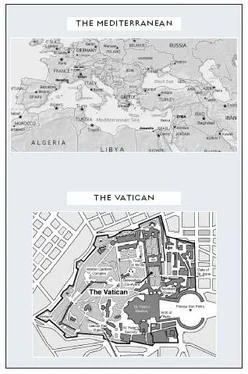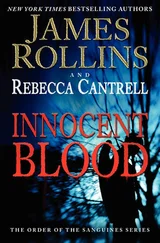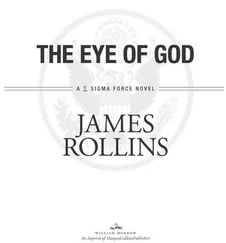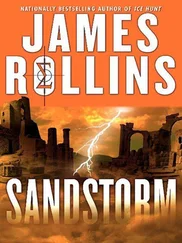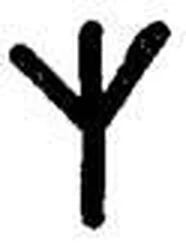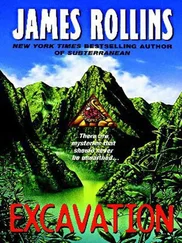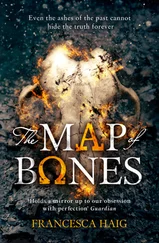“And got electrocuted.”
Vigor nodded.
“Okay,” Kat said. “Let’s say these Knights Templar rediscovered the Ark and possibly these m-state superconductors. But can we know if they understood its secrets?”
“I may have an answer. Commander Gray originally challenged me to trace historical references for these strange monatomic powders.”
“From Egypt to the biblical Magi,” Kat said.
Vigor nodded. “But I wondered if it stretched further. Past the age of Christ. Were there more clues left to find?”
“And you found them,” Kat said, reading his excitement.
“These m-state powders went by many names: white bread, the powder of projection, the Paradise Stone, the Magi Stone. To my surprise, looking forward from biblical times, I found another mysterious stone of alchemical history. The famous Philosopher’s Stone.”
Kat frowned. “The stone that could turn lead into gold?”
“That is a common misconception. A seventeenth-century philosopher, Eiranaeus Philalethes, a well-respected Royal Society Fellow, set the record straight in his treatises. To quote him, the Philosopher’s Stone was ‘nothing but gold digested to its highest degree of purity…called a stone by virtue of its fixed nature…gold, more pure than the purest…but its appearance is that of a very fine powder.’”
“The gold powder again,” Kat said, surprised.
“Can there be any clearer reference? And it wasn’t only Eiranaeus; a fifteenth-century French chemist, Nicolas Flamel, described a similar alchemical process with the final words, and I quote, ‘It made a fine powder of gold, which is the Philosopher’s Stone.’”
Vigor took a breath. “So clearly some scientists at the time were experimenting with a strange form of gold. In fact, the entire Royal Society of scientists was fascinated by it. Including Sir Isaac Newton. Many don’t know that Newton was a fervent alchemist and also a colleague of Eiranaeus.”
“Then what became of all their work?” Kat asked.
“I don’t know. Many probably reached dead ends. But another colleague of Newton, Robert Boyle, also researched alchemical gold. But something disturbed him, something he discovered. He stopped his research and declared such studies dangerous. So dangerous, in fact, that he said its misuse could ‘disorder the affairs of mankind, turning the world topsy-turvy.’ It makes one wonder what scared him. Could he have touched upon something that drove our lost alchemical society deep underground?”
Kat shook her head. “But what does the Philosopher’s Stone have to do with Gothic architecture?”
“More than you’d think. An early-twentieth-century Frenchman named Fulcanelli wrote a best-selling treatise titled Le Mystère des Cathédrales . It elaborated on how the Gothic cathedrals of Europe were coded with arcane messages, pointing to a vein of lost knowledge, including how to prepare the Philosopher’s Stone and other alchemical secrets.”
“A code in stone?”
“Don’t be surprised. It was what the Church was doing already. Most of the populace at the time was illiterate. The decorations of the cathedrals were both instructional and informative, biblical storytelling in stonework. And remember who I said built these massive Gothic story-books.”
“The Knights Templar,” Kat said.
“A group known to have gained secret knowledge from the Temple of Solomon. So perhaps, besides telling biblical stories, they incorporated some additional coded messages, meant for their fellow Masonic alchemists.”
Kat wore a doubtful expression.
“One only has to look closely at some of the Gothic artwork to raise an eyebrow or two. The iconography is full of zodiac symbols, mathematical riddles, geometric mazes right out of alchemical texts of the time. Even the author of The Hunchback of Notre Dame , Victor Hugo, spent a whole chapter decrying how the artwork of Notre Dame was contrary to the Catholic Church. Describing its Gothic art as ‘seditious pages’ in stone.”
Vigor pointed ahead, through the trees. The park ended as they neared the Palace Square. “And Fulcanelli and Hugo weren’t the only ones who believed something heretical was involved with the Knights Templar’s artwork. Do you know why Friday the thirteenth is considered unlucky?”
Kat glanced to him and shook her head.
“October 13, 1307. A Friday. The king of France, along with the pope, declared the Knights Templar to be heretics, sentencing them to death, and crucifying and burning their leader. It is well believed that the real reason the Knights were outlawed was to wrest power from them and gain control of their riches, including the secret knowledge they possessed. The king of France tortured thousands of Knights, but their storehouse of riches was never discovered. Still, it marked the end of the Knights Templar.”
“Truly an unlucky day for them.”
“The end of an unlucky century , really.” Vigor led the way out of the park and along the tree-lined street that led toward the center of town. “The division between the Church and the Knights started a hundred years earlier when Pope Innocent III brutally wiped out the Cathars, a sect of Gnostic Christians with ties to the Knights Templar. It was really a century-long war between orthodoxy and Gnostic belief.”
“And we know who won that,” Kat said.
“Do we? I’m wondering if it wasn’t so much a victory as an assimilation. If you can’t beat them, join them. An interesting paper turned up in September 2001, titled the Chinon Parchment. It was a scroll dated a year after that bloody Friday the thirteenth, signed by Pope Clement V, absolving and exonerating the Knights Templar. Unfortunately, King Philippe of France ignored this and continued his country-wide massacre of the Knights. But why this change of heart by the Church? Why did Pope Clement build his Avignon palace here in the Gothic tradition, constructed by the same heretical masons? And why did Avignon become in fact the Gothic center of Europe?”
“Are you suggesting the Church did an about-face and took the Knights into their fold?”
“Remember how we’d already come to conclude that some aspects of the Thomas Christians, Christians of Gnostic leanings, were already hidden inside the Church. Perhaps they convinced Pope Clement to intervene to protect the Knights from King Philippe’s rampage.”
“To what end?”
“To hide something of great value — to the Church, to the world. During the century of the Avignon papacy, a great surge of building occurred here, much of it overseen by the Children of Solomon. They could have easily buried away something of considerable size.”
“But where do we begin looking?” Kat said.
“To the work commissioned by that wayward pope, built by the hands of the Knights, one of the largest masterworks of Gothic architecture.”
Vigor waved forward, where the street emptied into a large square, populated by merrymakers from the festival. Colored lights framed a dancing area, a rock band on a makeshift stage pounded out a riff, and young people writhed, laughed, and yelled. Along the fringes, tables had been set up, crowded with more festival participants. A juggler tossed flaming brands into the night sky. Clapping encouraged him. Beer flowed, along with paper cups of coffee. Cigarette smoke billowed, along with special hand-rolled herbs.
But backdropped against this party rose an immense, dark, and looming structure, framed by square towers, fronted by massive archways of stone, and set off by a pair of conical spires. Its stone face was a sober contrast to the merriment below. History weighed it down…and an ancient secret.
The Palace of the Popes.
“Somewhere within its structure lies some seditious page of stone,” Vigor said, stepping closer to Kat. “I’m sure of it. We must find it and decode it.”
Читать дальше
